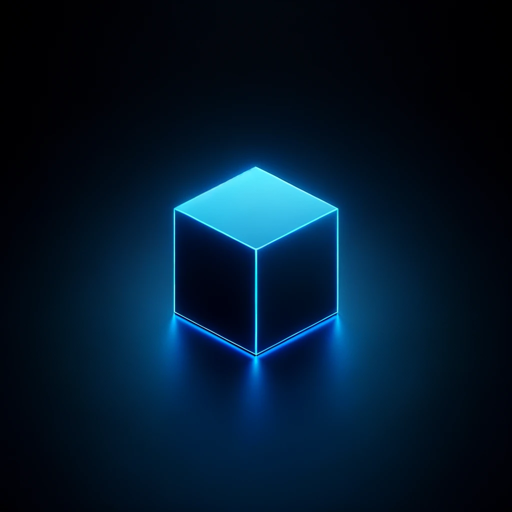bpy-Python automation in Blender
Automate Blender tasks with AI-driven Python scripts
Bounding box of the active object
Explain the bmesh module
Should I use bpy.ops operators
Architecture of geometry nodes
Related Tools
Load More
Blender Program Generator AI
Crafts efficient Blender Python scripts.

Blender Guru
A Blender expert aiding users at all levels to master Blender.

Blender Buddy
Blender 3D modeling expert, guiding with detailed tips and solutions.
Blender Buddy AI
Concise and helpful expert in Blender 3D, guiding users in all aspects of 3D creation and Python scripts.

BIMgpt
Your AI BIM consultant.

Python Buddy
Simpler Python code solutions
20.0 / 5 (200 votes)
Introduction to bpy
bpy is the Blender Python API, designed to allow users to automate and extend Blender's functionality using Python. It provides programmatic access to all aspects of Blender, including object manipulation, scene creation, material adjustments, rendering, and more. Through bpy, users can script tasks, build custom tools, or even develop complex add-ons that integrate deeply into Blender’s architecture. For example, if you want to create hundreds of objects in a scene with specific transformations, bpy allows you to do this efficiently, avoiding the need for manual interaction. bpy interacts directly with Blender’s core data structures (meshes, objects, scenes) and is built on top of Blender’s internal design, making it a powerful tool for technical artists and developers alike.

Main Functions of bpy
Scene Management
Example
Creating and organizing scenes, objects, lights, and cameras programmatically.
Scenario
A user can write a script to automatically generate a complex scene with predefined object positions, lighting setups, and camera placements. This is useful in batch processing animations or setting up recurring shots with consistent setups.
Mesh and Geometry Manipulation
Example
Using the `bmesh` module to create and edit geometry at a vertex level.
Scenario
A 3D artist can script a parametric model generator, such as creating a procedural building generator where wall segments, windows, and floors are instantiated based on input parameters, saving hours of manual modeling.
Rendering Automation
Example
Configuring rendering settings and executing renders without manual interaction.
Scenario
A studio can automate rendering a batch of frames with different camera angles, lighting, or object properties. A script can be set to iterate over all possible configurations and render each one to an output folder.
Ideal Users of bpy
Technical Artists
Technical artists benefit from bpy by automating repetitive tasks such as setting up complex scenes, modifying object properties en masse, and exporting assets in a customized way. Their understanding of both the artistic and technical aspects allows them to leverage bpy for advanced production workflows.
Python Developers
Python developers working in game development, animation, or VFX use bpy to create Blender add-ons, automate asset management, or integrate Blender with other tools in a production pipeline. Their programming skills help them extend Blender’s functionality beyond its default user interface.

Guidelines for Using bpy
Step 1
Visit aichatonline.org for a free trial without login. Also, there's no need for ChatGPT Plus to use it.
Step 2
Install Blender from blender.org if it's not already installed. bpy is Blender's built-in Python API, so Blender installation is necessary.
Step 3
Open Blender and switch to the 'Scripting' tab. This allows you to interact directly with the bpy module and run Python scripts.
Step 4
Familiarize yourself with the bpy.data, bpy.context, and bpy.ops modules, which provide access to data, context, and operations within Blender.
Step 5
Start by automating simple tasks, such as creating objects, manipulating geometry, and rendering scenes. For optimal learning, refer to the official bpy API documentation at docs.blender.org/api/current.
Try other advanced and practical GPTs
Price Scout
AI-powered price comparison made easy

Sociologist
AI-Powered Insights for Sociological Research

상세페이지 작성
AI-powered product page creator.

Image Prompt Generator
AI-powered image creation from text prompts

TOEFL iBT Writing Evaluator
AI-Powered TOEFL iBT Writing Feedback

Best Quora Answers
AI-Powered Answers for Quora.
PDF Split & Merge
AI-powered PDF Splitting and Merging

Persona Architect
Empowering marketing with AI-driven personas

Lead Magnet PRO 2024
Transforming Lead Generation with AI

AutoGen Engineer
AI-powered assistant for developers

Paint by Numbers Guide Plus
AI-powered assistance for creative guidance.

Chat With Paper
AI-powered document analysis made easy

- Automation
- Scripting
- Animation
- 3D Modeling
- Rendering
Detailed Q&A About bpy
What is bpy?
bpy is the Python module that allows you to interact with Blender's internal functionality. You can control every aspect of Blender through Python, including modeling, rendering, animation, and more.
How do I create a mesh using bpy?
You can create a mesh using `bpy.data.meshes.new()` to define the mesh data and `bpy.data.objects.new()` to create an object linked to the mesh. Finally, link the object to the scene's collection: `bpy.context.collection.objects.link(object)`.
Can I automate rendering with bpy?
Yes, bpy allows you to automate rendering through `bpy.context.scene.render.filepath` to set the output path and `bpy.ops.render.render()` to start rendering. You can also tweak rendering settings programmatically.
How can I manipulate geometry in bpy without using bpy.ops?
Use the bmesh module, which allows low-level mesh manipulation. Create a bmesh object with `bm = bmesh.new()`, then load a mesh with `bm.from_mesh(mesh)`, and finally, apply changes back to the mesh using `bm.to_mesh(mesh)`.
Is it possible to create UI elements using bpy?
Yes, you can create custom UI panels and menus using `bpy.types.Panel` and `bpy.types.Menu`. These elements can be customized with buttons, sliders, and other widgets to control various Blender functions.